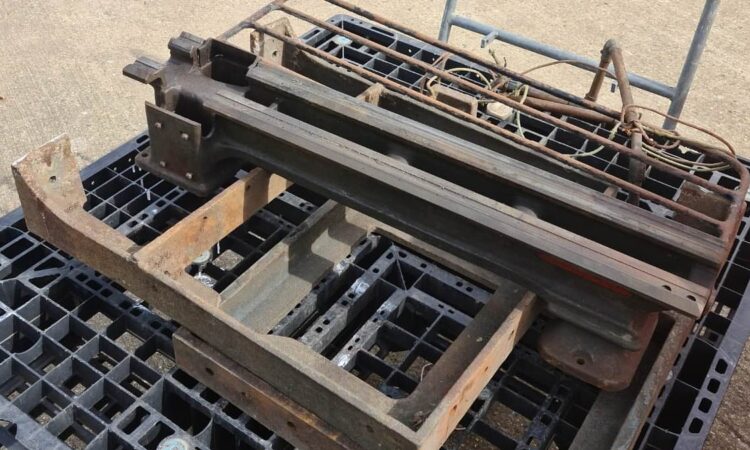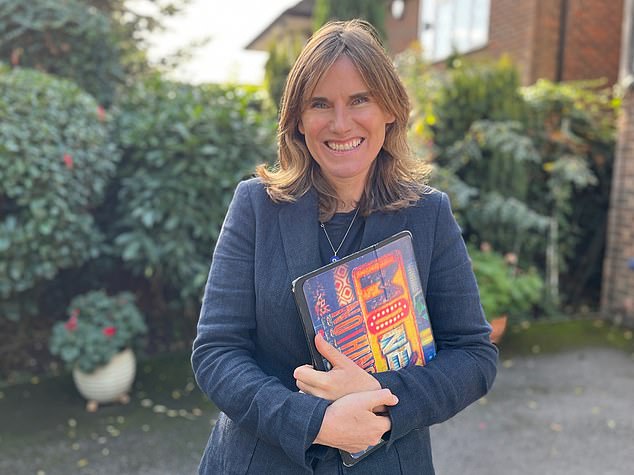BBC Money for Nothing guest sells 70-year-old scrap for unbelievable price in the show’s highest-ever sale

A guest on the BBC hit show Money for Nothing was left stunned after his 70-year-old scrap that he was going to throw away, made a profit of £1,400 in the show’s highest sale.
It comes as just as the daytime programme has reached its 1000th transformation.
Each episode sees entrepreneur Sarah Moore save what people consider ‘trash’ from being dumped and instead transforms them into valuable pieces, making money for people who had no idea there was cash to be made from their rubbish.
The items that are deemed worthless by their owners are upcycled and then sold on for profit.
In a recent episode, the show saw its highest-profit item of the series, a cast iron frame with a metal working lathe that got transformed into a beautiful industrial garden bench with botanical twists – it was sold for a whopping £1,400.

Nick, who appeared on the show this month, explained how the lathe had belonged to his father, but has been collecting dust in the garage for the last 20 years.
His dad bought it from a car garage in the 1950s – despite planning to throw it away, Nick was gobsmacked by the end result.
When presenter Sarah Moore presented a photo of the resting bench that blacksmith Kev Paxton had created from the scrap metal, the owner couldn’t believe it.
Nick exclaimed: ‘Wow, that is amazing. It’s just beautiful’. He added that his father would have thought it was a ‘wonderful outcome if he was here to see it’.
Handing over the cash for the largest profit in the new series and one of the biggest transformations, Sarah said: ‘The pictures were shared and there was quite a lot of interest in it so I’ve got some profit here for you. I have £1,400 here’.
Shocked, Nick gushed: ‘I could never have believed that. That is amazing. Goodness me’ and revealed that he plans to spend the money on a new lawn mower.
If you want to give upcycling a go yourself to try and rake in some extra cash, Money for Nothing presenters Sarah Moore and Jacqui Joseph have given their top tips for getting started.
How to find items to upcycle
Sarah recommends car boot sales, charity shops, online marketplaces, antique fairs and auction sites as just some of the places you could find items to upcycle.
The expert recommends looking for solid wooden bits of furniture to upcycle – they are often better made than the flat-packed equivalent.
She explains: ‘These pieces of furniture often have a history of their own, and by updating and transforming them, they can be given a new lease of life and enjoyed for years to come.
‘Make sure you inspect items fully so you can see any parts that are broken or missing.
‘It’s good to know from the start what you might be working with. Make sure you check any upholstery for moth damage too.’
The expert also has a thrifty tip on how to find fabulous fabric without breaking the bank.
She revealed: ‘Vintage fabric can be very expensive if you buy it by the metre. Searching online for vintage curtains, bedspreads or sofa covers is a great way to get a lot of material for a snip.
‘Recycling old clothes is another pound-saving way to get crafty, with fabrics like denim and tweed ideal for cladding a piece of furniture or making bags.’
Repurpose an item you already have
If you’re strapped for cash but want to change up your home, the first thing you should do is look at the furniture that you already have.
Money For Nothing presenter Jacqui Joseph says: ‘Sometimes the simplest upcycles are the most effective – as well as being the most cost-effective.
‘Little things like changing the handles, legs, hinges or feet on a piece of furniture can make all the difference when it comes to giving it a fresh, new look’.
You could also try giving old items a completely new purpose. For example, castors could be added to drawers to create handy under-bed storage, legs added to a vintage suitcase to create a unique side table, or shelving created from an old ladder.
How to upcycle items
Jacqui suggests starting with a small project to build up your confidence and to find your artistic style.
Once you’ve found your flow, you can build up to bigger items and get experimenting.
You could start with picture frames, wooden candle sticks, trinket boxes or trays, and build up to something more substantial.
Find the right tools: Before undertaking an upcycling project, it’s a good idea to figure out which tools you will need.
Sarah says ‘Try asking around to see if friends or family have tools you could borrow, become a member of a local tool library, or consider picking up pre-loved items from a re-use shop at your local recycling centre’.
Adding a splash of colour to a tired piece of furniture can be a great way to revitalise it.
Sarah recommends using tester-size pots of paint when working on smaller items. Leftover rolls of wallpaper can be picked up online, and are a good way of jazzing up a chest of drawers or coffee table.
Additionally, if you’re upcycling an item for your own home, have a think about how it will fit with the colour scheme and decor of an existing room.
This may help you decide upon colour and finishing so the item stands out and also compliments a room.
The experts advise that taking your time and having fun are also important aspects to keep in mind – be patient and don’t rush the upcycling process.
Make sure you do all the right preparation, and allow everything to fully dry before you move on to the next step.
Never be afraid to experiment with colours or design outside of your comfort zone. Let your creativity go wild and trust the process.
Sarah says it’s not unusual for a project to look dreadful halfway through, but the trick is to keep persevering and have fun with it.
How to sell your upcycled items
Once you’ve got your beautiful upcycled item, it’s time to sell it for a profit.
Sarah suggests: ‘Set up a social media account and follow other upcycling accounts.
‘Post regularly. Look at what other people are doing, and try to find your own niche. People are always looking out for items that are a bit different. What makes your work stand out from others?’
Practically speaking, when trying to sell items, make sure you take good well- lit photos, showing the item from a few different angles. Add a detailed description, and include dimensions. Look around and see how others are pricing similar items.
Approach local shops and businesses and see if they would be happy to stock or purchase any of your items.
There are lots of different places to sell items online, but make sure you think about transportation of the finished item, and whether you or the buyer will cover the cost of that.






